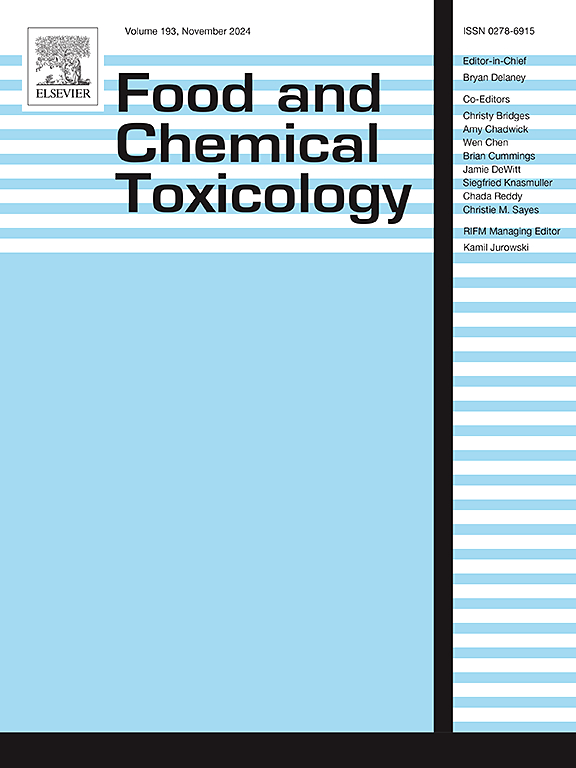The content of metallic trace elements in rice-containing products used in the diet of infants and young children – Health risks for consumers
IF 3.9
3区 医学
Q2 FOOD SCIENCE & TECHNOLOGY
引用次数: 0
Abstract
Infants and young children are a group that is particularly sensitive to harmful substances. Therefore, products intended for consumption by infants and young children are subject to the requirements of food law and must meet high quality, microbiological, and chemical requirements. The study aimed to determine the content and assessment of exposure to selected metallic trace elements: arsenic, chromium, and nickel, in products marketed in Poland intended for consumption by infants (after 4 months) and small children (after 12 months). The research material consisted of 55 samples of products from 14 brands. The content of arsenic (<0.19–5.03 mg/kg), chromium (<0.08–0.88 mg/kg), and nickel (<0.41–3.24 mg/kg) was determined in the mineralized samples using the electrothermal atomic absorption spectrometry (ET-AAS) method. The obtained values of element concentrations were used to estimate the non-cancer and cancer health risk of infants (6–11 months) and young children (1–2 years). Food for infants and young children does not pose a significant threat resulting from the chromium and nickel content in these products. Daily consumption of rice-based products by children carries the possibility of non-cancer and cancer risk, which is a consequence of the arsenic content in these products.
求助全文
约1分钟内获得全文
求助全文
来源期刊

Food and Chemical Toxicology
工程技术-毒理学
CiteScore
10.90
自引率
4.70%
发文量
651
审稿时长
31 days
期刊介绍:
Food and Chemical Toxicology (FCT), an internationally renowned journal, that publishes original research articles and reviews on toxic effects, in animals and humans, of natural or synthetic chemicals occurring in the human environment with particular emphasis on food, drugs, and chemicals, including agricultural and industrial safety, and consumer product safety. Areas such as safety evaluation of novel foods and ingredients, biotechnologically-derived products, and nanomaterials are included in the scope of the journal. FCT also encourages submission of papers on inter-relationships between nutrition and toxicology and on in vitro techniques, particularly those fostering the 3 Rs.
The principal aim of the journal is to publish high impact, scholarly work and to serve as a multidisciplinary forum for research in toxicology. Papers submitted will be judged on the basis of scientific originality and contribution to the field, quality and subject matter. Studies should address at least one of the following:
-Adverse physiological/biochemical, or pathological changes induced by specific defined substances
-New techniques for assessing potential toxicity, including molecular biology
-Mechanisms underlying toxic phenomena
-Toxicological examinations of specific chemicals or consumer products, both those showing adverse effects and those demonstrating safety, that meet current standards of scientific acceptability.
Authors must clearly and briefly identify what novel toxic effect (s) or toxic mechanism (s) of the chemical are being reported and what their significance is in the abstract. Furthermore, sufficient doses should be included in order to provide information on NOAEL/LOAEL values.
 求助内容:
求助内容: 应助结果提醒方式:
应助结果提醒方式:


